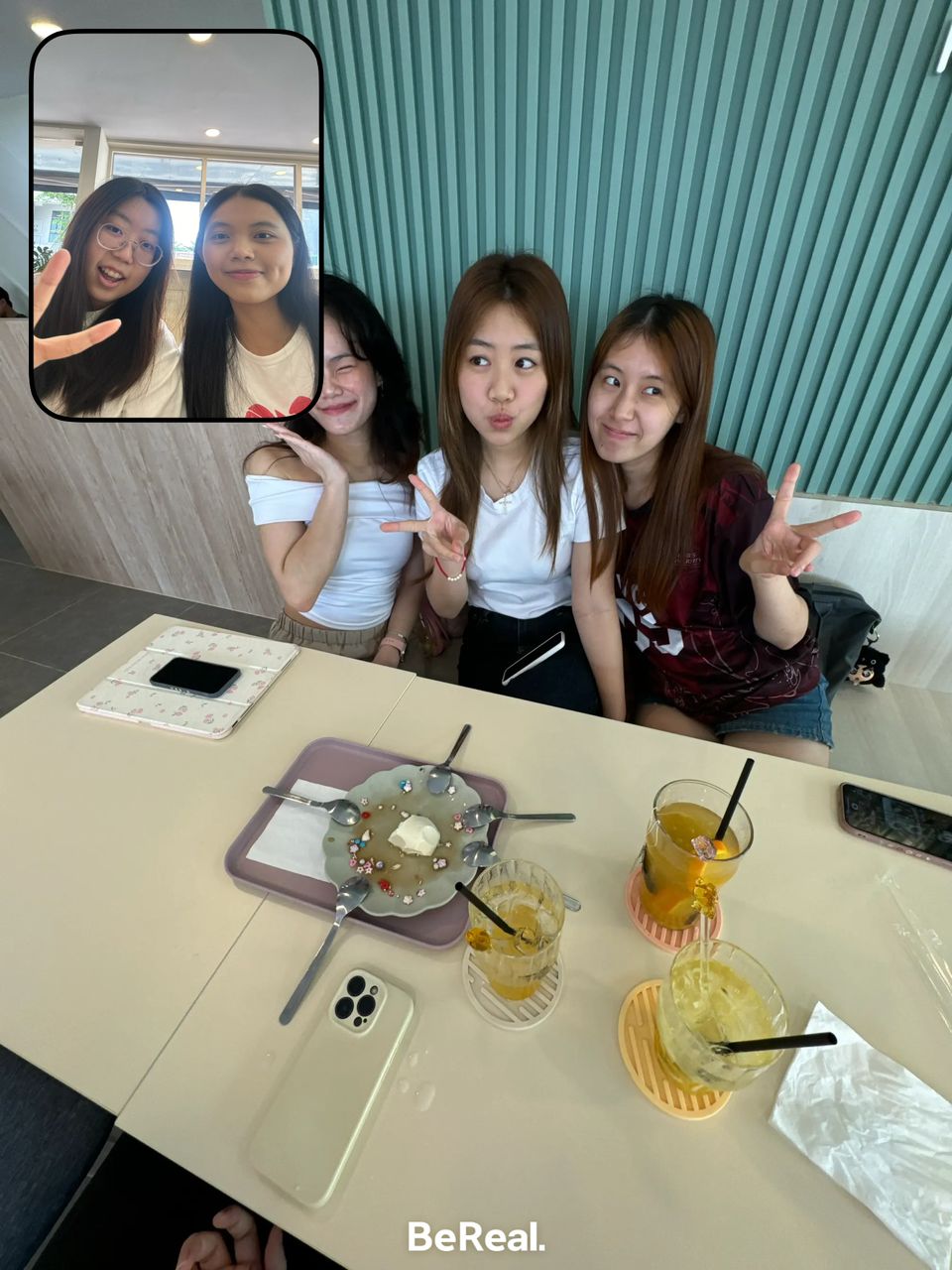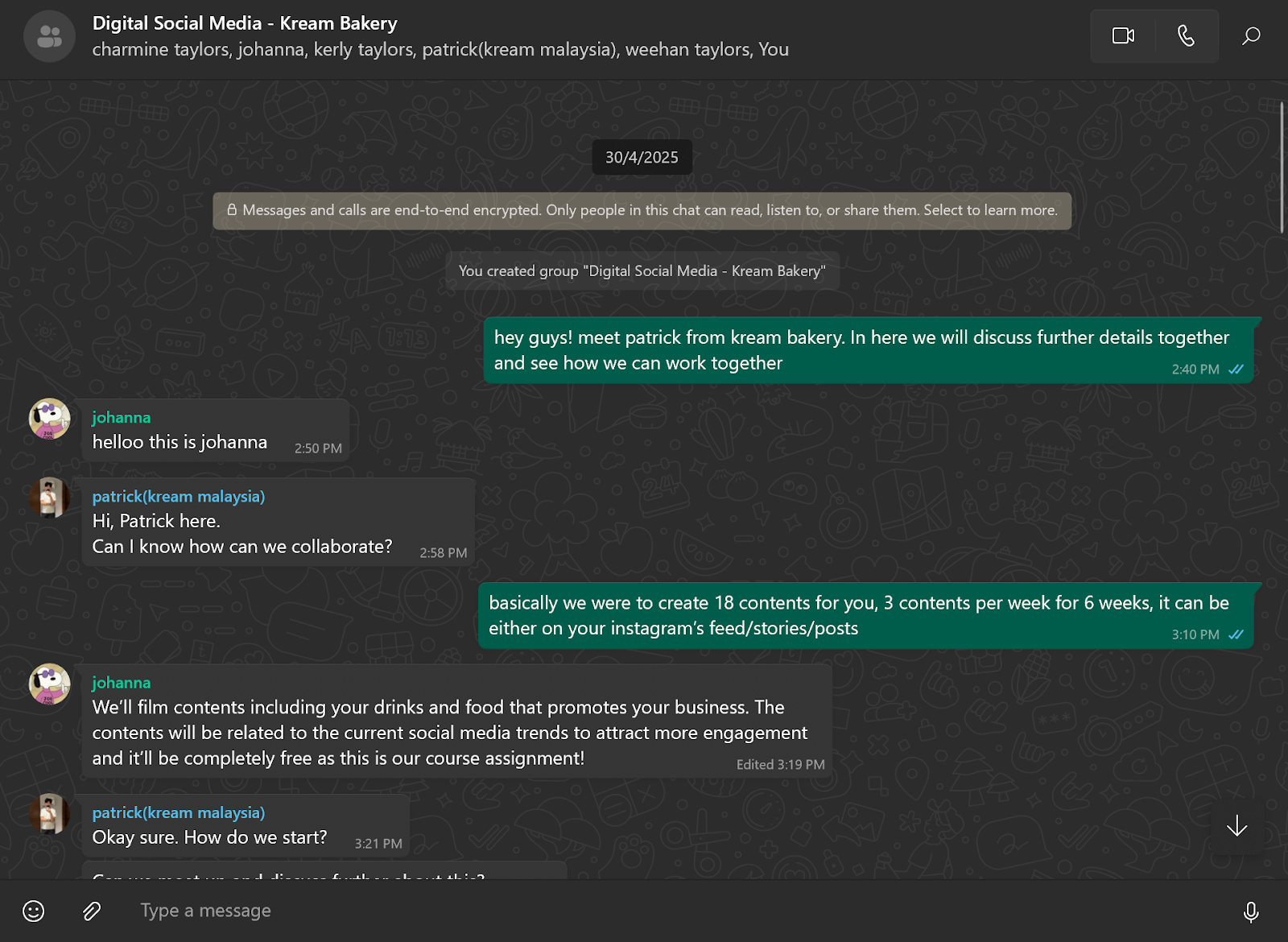Digital and Social Media Communication
21/04/2025 - 23/07/2025 | Week 01 - Week 14
Wong Jia Yi Carmen | 0357198 | Section 01 Group 05
Digital and Social Media Communication | Bachelor of Design (Hons) In Creative Media
TABLE OF CONTENTS
LECTURES
Introduction to Social Media Communication
4 key things to cover:
- Content Creation and Planning
- Building Captions and Messaging
- Visual and Video Editing
- Strategic Use of Different Social Media Platforms
- Facebook: Largest user base, community building
- Instagram: Visual-first platform, influencers, shopping features
- TikTok: Short-form video, viral trends, Gen Z audience
- LinkedIn: Professional networking, through leadership
- YouTube: Long-form video content, tutorials, vlogging
- Twitter: News, updates and real-time conversation
The Foundation of Effective Social Media Strategy:
- Personalization is essential for engaging and retaning followers
- Knowing your audience allows you to tailor content to their preferences, interests and behaviours.
- It improves engagement (likes, shares, comments) and leads to better conversion rates (sales, sign-ups, etc.)
- Helps you choose the right platform: Audiences behave differently on Instagram than on LinkedIn, for example...
Key Attributes:
1. Demographics:
Age, gender, location, education level, and job roles. Example: A clothing brand may target young women aged 18-24 living in urban areas
2. Psychographics:
Interests, values, beliefs, lifestyle and personality traits. Example: A tech company might focus on early adopters interested in innovation and new gadgets.
3. Behaviour:
How they interact with your content-- what types of posts they engage with, how often they comment, and what time they are most active. Example: A fitness influencer's followers might be highly engaged with workout tutorials.
4. Pain Points:
What problems or challenges do they face that your product, service or content can solve? Example: A skincare brand might identify its audience's pain point as finding products for sensitive skin.
What is a Persona?
A semi-fictional representation of your ideal follower based on real data and market research.
Persona Components:
- Name
- Age
- Gender
- Job Role
- Pain Points
- Preferred Platforms
- Content preferences
- How they engage with brands.
Example:
Name: Sarah, 25 years old, Marketing Coordinator
Interests:
Fashion, eco-friendly products, travel
Platforms Used: Instagram, Pinterest
Preferred Content: Short videos and stories showing behind-the-scenes content
In this question, we are identifying who influences and participates in relationships with the brand. What unites them with each other and to the brand. It helps us to find our core consumer group or the community to whom the brand matters most and how they uniquely relate to the brand and what their shared interest or characteristics are.
INSTRUCTIONS
fig 1.0 Digital and Social Media Communication's MIB Week 1 (21/04/2025)
TASK 1: BRAND INFORMATION
Timeframe: Week 01 - Week 04
Description: Conducting a Brand Information Study helps you develop a deep understanding of how brands operate in the competitive market by analysing a brand's story, product strengths and opportunities, which is crucial for crafting effective marketing strategies. Understanding the vision and mission will allow you to align future campaigns with the brand's core values. Evaluating current social media and marketing channels will enhance your ability to assess real-world brand communication and engagement tactics, sharpening your skills in social media strategy and digital marketing planning.
Content Audit
1. Content Situation -Frequency
- PIC
- Objectives - Platform Suitable?
- Target Market (current)
2. Content - Photo, Video/Reels, Stories?
3. Call To Action (CTA) - Bio
- Copywriters
4. What worked? What didn't work? (in terms in contents) Why?
We decided to choose Kream Bakery to collaborate with, we found them in Instagram.
I reached out to them during Week 2.
We agreed to meet up to get to know each other and had the opportunity to try out their food and drinks.


After getting checked with Mr Azrizal, he told us to ask Patrick some questions, and so we did.
Timeframe: Week 04 - Week 10
Description: Content planning is critical in planning a social media campaign because it ensures that the campaign is consistent, relevant and engaging. Planning for a content is crucial as it will clearly lay out the weekly/monthly or quarterly content for any brands or account.
After getting all the contents and ideas sorted in the Google Sheet, we start fliming.
Link to Google Sheet.
Due to them closing down the bakery soon, we decided to shoot everything in one go so later it's easier for us to edit the videos and stuff following by the next 6 weeks.



During Week 13, Mr Azrizal uploaded this in the Teams.
We did our recording presentation on Week 14.
FEEDBACK
Week 1: Discuss with your groupmates and research a brand you wish to collaborate with so we can move on.
Week 2: Settle down with a client next week
Week 3: Get information with your client and start working on the proposal.
Week 4: -
Week 5: Ask the necessary questions to your client
Week 6: Start fliming your contents
Week 7: Can open up a Instagram account to post the contents.
Week 8: -
Week 9: -
Week 10: -
Week 11: Personas is good, start working on the empathy map.
Week 12: Create Empathy map for all of your personas.
Week 13: -
Week 14: -
REFLECTION
Working on this subject has been one of the most intense yet eye-opening experiences this semester. Our task involved reaching out to a real client and creating engaging content for their business, an exciting opportunity, but one that quickly turned into a whirlwind of challenges and pressure.
At first, we are optimistic about collaborating with the client. We had brainstormed ideas and were ready to produce meaningful content. However, things took an unexpected turn when we found out at the very last minute that the client was planning to close down the store. This sudden news forced us to drastically change our plans. We had no choice but to rush the entire content production process and shoot everything within just 2 days.
Squeezing what was supposed to be 6 week long production into such a tight window was extremely stressful. We had to coordinate everyone's schedule, manage the fliming, and ensure the quality of the content, all while dealing with the emotional and logistical challenges of the store's closure. Not only that, our other subjects were piling up with assignments and deadlines, which only added to the pressure.
In the end, we pulled through. The content may have been created under pressure, but we gave it our best. This project reminded me that behind every polished social media post, there's often a storm of effort, stress, and resilience. And through it all, I’ve gained a deeper appreciation for what it takes to work in digital and social media — especially when things don’t go according to plan.


















Comments
Post a Comment